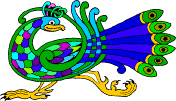|
Fairy Faery Faerie Feri
Victor Anderson's Feri TraditionPart One: A General Introductionand that is the road to Hell, And that is the road to Faery, where you and I must dwell. from the old British folk-song, Thomas the Rhymer 
There are many Neopagan religious traditions. One of the best known is Gardnerian Wicca, founded by Gerald Gardner. There are, however, many other paths. You can even find several very different traditions with similar names. A currently popular name for Neopagan traditions is Fairy, Faery, or Faerie. One Faery Tradition, also spelled Feri, was founded by Victor Anderson, and developed by Victor and his wife Cora, and several important Feri teachers, largely in the San Francisco Bay Area. Victor died on September 20, 2001, and became one of the Mighty Dead. A number of tributes to him, many from his memorial service, are at WitchVox: http://www.witchvox.com/passages/victoranderson.html Victor was born in 1917 and became blind at the age of two. He claimed spiritual descent from Hawai'ian Kahuna and African Vodoun. Victor was initiated into Harpy Coven in Bend, Oregon, as a teen. This group of people worked with the energy in the 1920's and '30's which eventually became the source of the Faerie Tradition. While very different from Gardnerian and other Neopagan Wicca, it was initiatory and magical, working on the phases of the Moon. The group broke up around the time of World War II. In 1944 Victor married Cora. Cora was a Southerner, as had been most of the members of Harpy Coven. She brought Southern folk magic to the practice she and Victor shared and developed. When Gardnerian and Alexandrian materials were published in the 1960's and 1970's, Victor incorporated some of them into his practice. In the 1960's, the family befriended a boy who grew to became the man known as Gwydion Pendderwen. As a bard sometimes called the Faerie Shaman, Gwydion became one of Victor's best known initiates, spreading some Faerie knowledge through the Neopagan community in the 1970's, and recording his stirring songs, until he died in an automobile accident in 1981. Gwydion added much of the Celtic, particularly Welsh, material, which was absent from Victor's earlier practice. In fact, the Faerie Tradition is not necessarily Celtic, although some initiated practitioners personally have and teach a chiefly Celtic orientation. According to Cora, in the book Fifty Years in the Feri Tradition, the original name of our tradition was Vicia (pronounced Vee-chya), related to the Italian term La Vecchia. As Faerie iniates teach others, they each add something of their own interests to the Tradition. Thus, someone trained by one teacher may well learn things that are not taught by another teacher, even though each teacher is a valid initiate. Currently within various authentic branches of Faerie are elements from such diverse sources as Arica, Eckankar, Tibetan Buddhism, Gardnerian and Alexandrian Wicca, Hawai'ian Huna as reinvented by Max Freedom Long, H. P. Lovecraft, Greek mythology, Mesopotamian mythology, Basque mythology, Native American practices, Kaballah, Santeria, Satanism, Sufism, Welsh mythology, and Yezidi traditions, among others. Starhawk is another well-known initiate, who gave her branch of Feri a political focus. Over the last couple decades, even the spelling of the tradition has varied. Genuine initiates may spell it Fairy, Faery, Faerie, or, as it is currently spelled, Feri. So what is the Faerie Tradition? Besides being this very particular blend of mythos and ideologies, it contains certain things that can only be learned through training, practice, and personal experience. While there is a bit of variation from branch to branch, there are some basics which most initiates and teachers agree upon. I have studied and worked with Feri for over ten years. While I cannot present Feri training over the WWWeb, as it is very much a personal, intimate, hands-on method, I would still like to share some information about it. I would also like to clarify that I am not presenting this site as being by Victor and/or Cora Anderson. I am presenting information that is taught by a number of different initiated Feri teachers. There is much more to the tradition, things that I would not reveal here because it would not be appropriate, and much that I could not reveal here, even if I wanted to, because Feri is not just a list of exercises but an experience. I have put this site here to relieve some of the confusion regarding what the Feri tradition is. One cannot know this tradition just by reading this site, nor by doing the very few elementary exercises given here. I only hope this site keeps people from confusing Victor's tradition with those of people like Kisma Stepanich or other Celtic oriented traditions using the same name. Follow the Road to Faery |

